One of the questions that I often get asked about during my parenting seminars is this: “Teacher Tanya, what kind of toys should I buy for my baby?” As a parent myself, I understand where this question is coming from- there is always this desire to provide the best, only the best for our child. I would always respond by asking, “Have you observed your infant and based on your observations, what do you think your infant needs?”
Jean Piaget, a psychologist and once ranked the 2nd most influential psychologist in the 20th century in one 2002 study, explained it so well when he said, “To understand is to invent”. When applied to the world of child development, this only meant that “young children learn the most important things not by being told but by constructing knowledge for themselves in interaction with the physical world and with other children- and the way they do this is by playing.” (The Play’s The Thing, 1992).
Have you observed how your infant plays?
Do you notice the range of emotions that he/she exhibits as he explores a particular object?
Do you see joy, perseverance, excitement when finally he can grasp that ball and lay it on his hands? Or have you seen the frustration when he cannot reach for the same ball that is stuck under the table?
Have you heard how he expresses himself during play- the babbling, the various sounds he attempts to make are all markers for the development of his language? Do you see how active your infant is- the ability to move using those big muscles and even his ability to use his small fingers to scoop that particular object?
All of these are pointing to this one important principle that we often forget- that it is really more than just playing for an infant. Because for young children, playing is learning. This is how they learn about themselves, about others and the world around them.
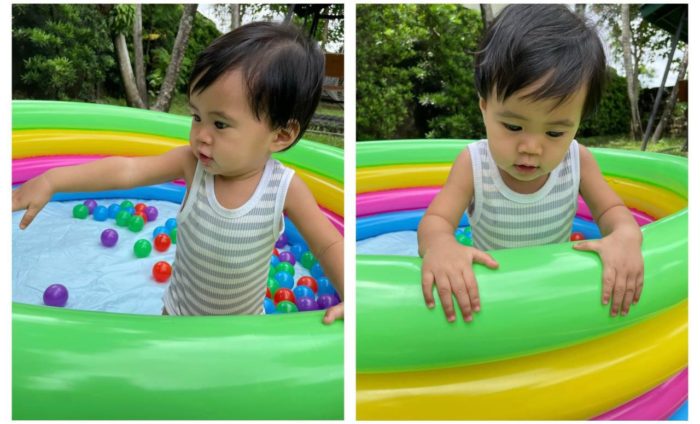
Another question that parents often ask me is this: “Teacher, can you help me understand why my infant plays that way?” I remember one parent sharing that, “Teacher, my baby would just throw his blocks around, all the time-and it gets tiring as a parent to keep on putting it back again and again.”
Young children (0-2 years old) are focused on exploring the physical world around them. This means that they are in the exploration phase-this is seen in how they move actively and how they are beginning to express themselves (oral language). It is at this stage according to Erikson that a young child needs to develop trust first, and by developing this, that young child will be able to not just connect but also develop autonomy or independence. A young infant also needs sensorial experiences- the ability to touch, to feel, to see, to hear, to taste, to move.
A follow-up question that parents also ask me is this: “Teacher, how can I support my infant during this stage?” As parents, we can support our infant by doing the following:
- set-up a play space that will allow your young child to explore (think about a particular area in your house where you can set this up, whether you have a small space at home- I know this is doable)
- consider safety at all times (evaluate your chosen play space and make sure that they are free from any hazards/accident as your infant plays)
- embrace a playful, open and supportive attitude (this means that you need to really carve out a time within your day where you would be present with your infant as he plays independently/on his own and at the same time, find pockets of time within your day to play with him/her.
- choose play objects that is age-appropriate and developmentally-appropriate for your infant
When it comes to play objects, here are some suggestions:
*open-ended toys are suitable for infants (these are play objects that an infant can explore in more than 1 way)
Dr. John Medina, in his book entitled: Brain Rules for Baby (2014), pointed out the benefits of using open-ended toys/open-ended playtime and these are the following: children become more creative, better at language, better at problem-solving, less stressed, better at memory, and more socially skilled.
*Less is more. I like what my mentor, Ruth Anne Hammond, an infant and toddler specialist, wrote in her book: Respecting Babies, and I quote her, “Babies and children who are offered too many new toys or constant entertainment, do not have a chance to learn to keep themselves interested by creatively using and combining the same-old same-old toys. With same objects, over time, a child uses creativity to make them into different activities. Less is or becomes more.”
- Examples of play objects: balls of different sizes/shapes/texture, boxes, short chains of linking rings, small wooden bowls, soft toys, muffin cups, basin, baskets, inflatable swimming pool, small cloth, etc.
Here’s an example of my infant, Nathan exploring an open-ended toy. These balls are anti-microbial, meaning they are very safe to explore with- in case an infant will place it inside his mouth (which they will always do). Balls are good play objects as they can be used in multiple ways. Observe your infant, you will be amazed in how many ways he can play with a ball or balls.
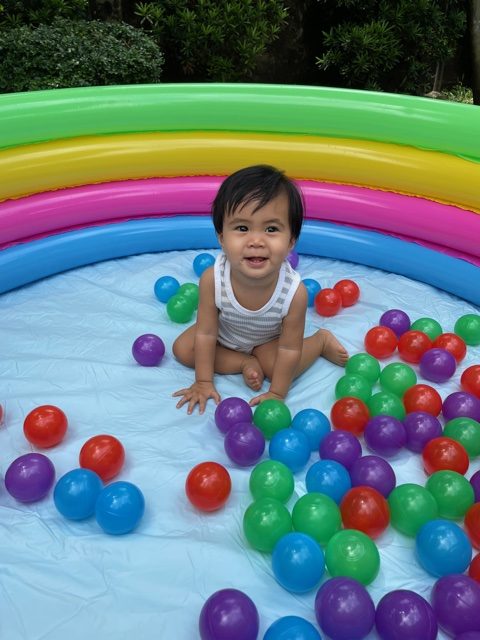
You can also set-up an inflatable pool like the one in the picture. This pool from Bestway is easy to set-up at home, You can put it inside your home or if you have a garden, do it outdoors. You can put water in it for some water play for your infant or you can choose not to and just let your infant explore inside. Infants and even older children would enjoy playing with this kind of play space.
If you want to see Nathan playing with these balls, I uploaded his video via my Instagram.
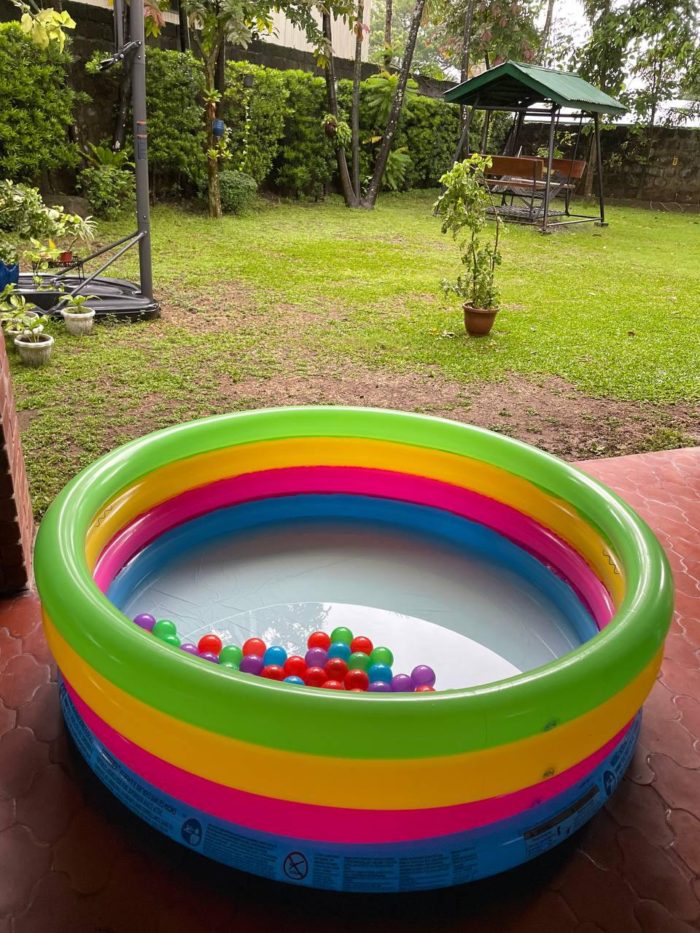
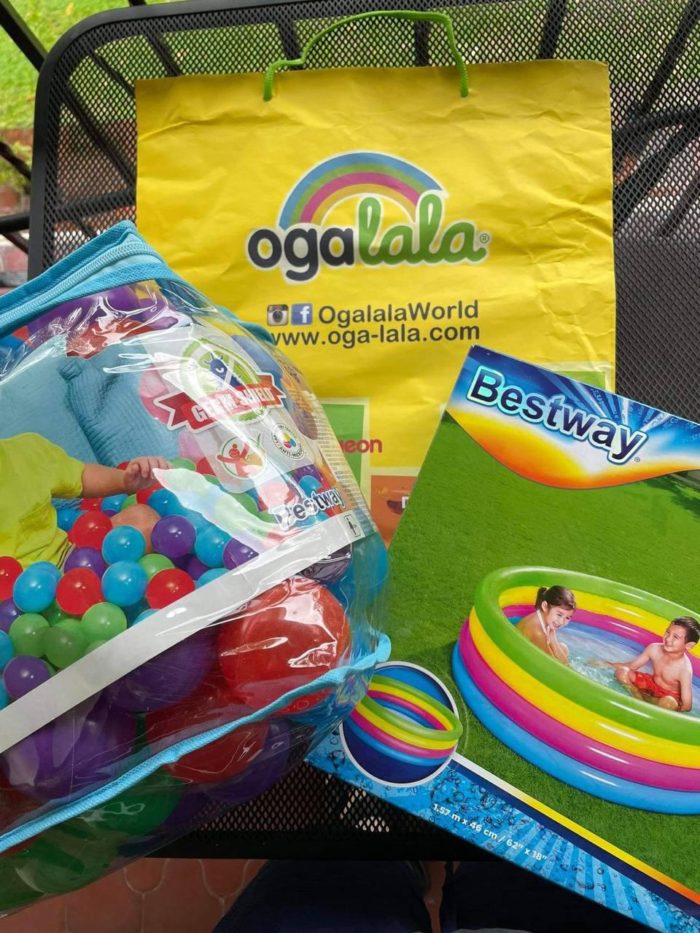
This article was written in partnership with Ogalala World. You can check out their items via their website: https://oga-lala.com and via Lazada: https://www.lazada.com.ph/shop/ogalala You can also check them online via their FB page and Instagram: Ogalala World. #TheOgalalaWay #SimplifyParenting
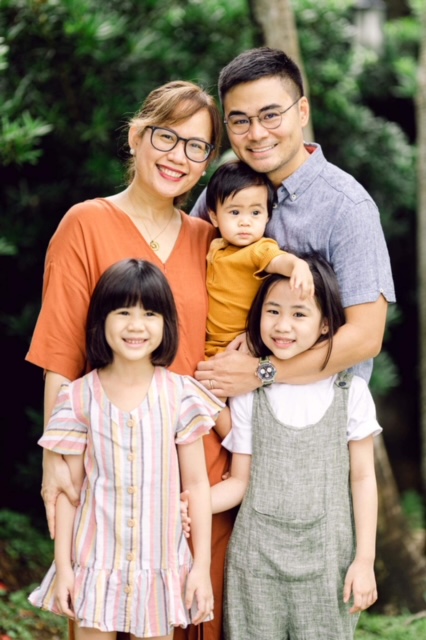
Comments are closed here.